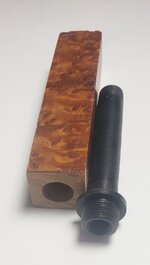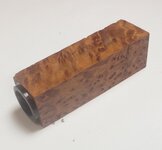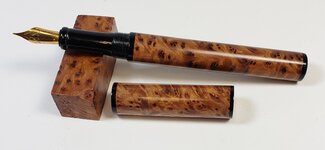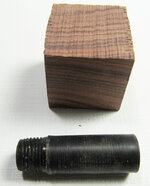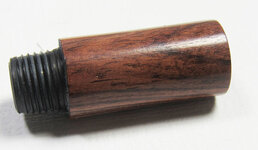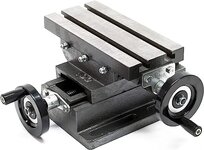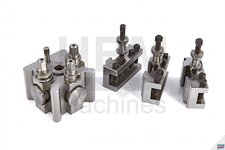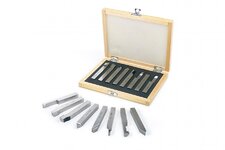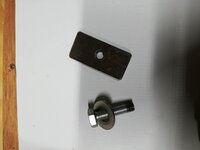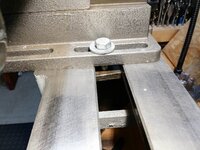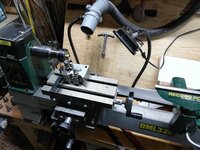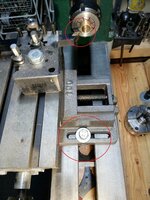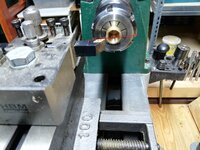I do not agree. Drilling larger diameters in brass is difficult with ordinary HSS drills. Threading is easy. I have special drills for plastic/brass 1-10 mm in steps of 0,1mm. For making the hole in the head of a brass hammer I needed to enlarge the hole. I had only normal hss drills To achive the 13,5 mm I need to drill in steps of 0,2 mm.
Drilling large diameters is difficult in any material, as is a matter of physics (surface, friction factor, bla... bla... ), but is much more obvious in metal. There's no need for such small steps, I usually make a 13mm hole (for the M14x1 thread) in just 3 steps: 6 (or 7)mm / 10mm / 13mm. It can be done even simpler, but I don't wanna stress my lathe. Anything else is inefficient and is a waste of time and resources. But, at the end, is just a matter of engineering knowledge, you need to ensure the right RPM, some cooling fluid (whatever might be, WD40, oil, water, mixtures, depending the drilling characteristics), a good drill bit (there are HSSs, and...HSSs

, if you know what I mean).

